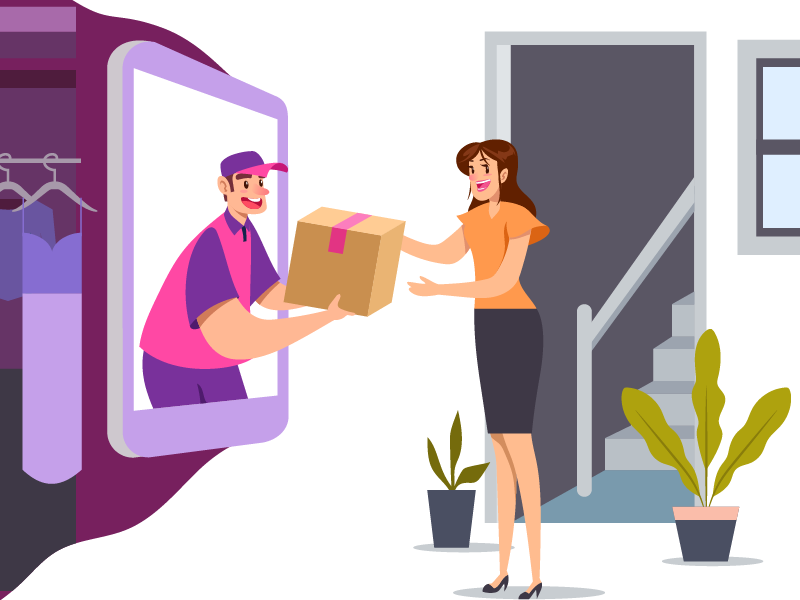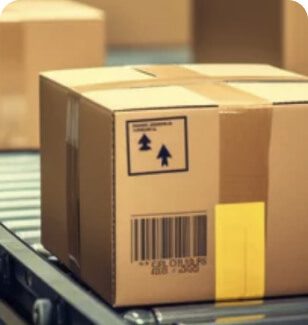The Free Returns Era Is Over — Here’s What it Means for Online Retailers

Let’s dive in and explore why this happened, whether this offering makes sense for your online store and how to create an unforgettable returns experience — whether it’s free or not.
“A great e-commerce experience requires more than competitive prices, a robust selection of goods, fast shipping and easy returns … it takes them all. Today’s consumer mindset has changed. Services like Amazon Prime have set the bar at a higher level, with speedy delivery, low prices, a vast selection and hassle-free returns.”
Why Brands Stopped Offering Free Returns
Experts do not point to a single reason the free returns era is over, but rather a collection of circumstances that add up to one truth: Online retailers are simply losing too much money on returns. And for businesses that aren’t household names like Amazon, the situation isn’t sustainable.
A few recent trends have also exacerbated the situation:
- Higher return volume: Ecommerce exploded during the pandemic, with 55% of consumers buying products online at least once per week. More purchases result in more returns, especially when considering ecommerce has a 16% return rate on average.
- Increased inventory: Even when those products do get returned, they can’t be sold as new. A few online stores like Express and H&M feature a secondhand section, while online thrift stores sell exclusively pre-owned items. However, most returned inventory sits in the warehouse and adds to storage costs.
- More environmental awareness: Today’s consumers are more eco-conscious than ever before, and their purchasing behavior reflects it. They’re learning only half of returned inventory is restocked, and much of it goes to the landfill. Unhappy with these processing practices, customers take their money elsewhere.
With this in mind, does it make sense for your ecommerce business to offer free returns?
The Pros of Free Returns
Returns are an inevitable part of ecommerce, but making them free for customers has its advantages. Let’s take a look at how free returns can positively impact your brand for both you, the seller, and your customers.
For sellers:
- Attract more customers: Recent research from Shopify revealed 68% of shoppers actively search for brands that offer free returns when looking for new products online. Additionally, 73% of consumers now prefer to shop with retailers who offer free returns, up from 70% in 2019. Free returns can help your online store stand out and get more first-time customers in the door.
- Increase brand loyalty: When your customers are happy with your policies, they return to your online store. Therefore, it’s probably no surprise to learn 86% of shoppers will buy again from brands that offer free returns, and 75% will even buy more if they can send back unwanted items without extra costs.
- Earn second-chance sales: Compounding on the advantages above, more customers means more opportunities for second-chance sales. By offering exchanges or showcasing related products during your returns process, you can keep the sale and earn another happy customer.
For shoppers:
- Increased confidence: Shopping online comes with a certain risk. Reports show 19% of returns are due to product dissatisfaction, and 22% are attributed to products not fitting properly. Free returns give consumers the confidence they need to click “Order,” knowing they can expect a full refund if a purchase doesn’t work out as planned.
- Lower shopping costs: Even for casual online shoppers, return fees quickly add up. Free returns provide a lower overall cost to consumers, which is key in an economy that feels more expensive than ever.
- Brand discovery: Shoppers are delighted to discover new brands and products online, and free returns are a major added bonus.
The Cons of Free Returns
There are clear benefits to offering free returns, but as an online retailer, you should consider both sides of the coin before creating (or changing) any policy that will impact your bottom line. Free returns have their downsides too.
For sellers:
- Processing costs: A recent RetailWire study showed processing costs average $8 per item, which can quickly accumulate — especially if your online store has a high return rate.
- Problem customers: Plenty of brands have bemoaned their customers who abuse their free returns policy, especially in the apparel category. The “wardrobing” trend, where consumers wear items once before returning them, has led to $25 billion in lost revenue due to return fraud.
- Setting a precedent: If you commit to offering free returns, you’ll likely have to commit for the long term. Customer sentiment can quickly sour if you go back to paid returns in the event of increased shipping costs or too-thin margins for your business.
For both sellers and shoppers:
- Environmental impact: Today’s eco-conscious consumers are acutely aware of the impacts of ecommerce, and returns only add to the problem. Offering free returns may put off prospective customers, which is a lose-lose situation for both sellers and shoppers.
4 Ways to Offer Free Returns (Without Breaking the Bank)
Fortunately for cost-conscious online retailers, there are still ways to offer free returns that won’t break the bank.
- Increase prices: Easily build the costs of free returns into your catalog by slightly increasing prices for your products.
- Offer a paid return label: Technically this isn’t free, but it can help offset return costs. Let shoppers opt to pay a small amount extra to have a return label included with their order, or they can take the risk of a more expensive return later.
- Set a minimum: Offset your total shipping costs (initial and returns) by setting a threshold for customers to qualify for free shipping. Then, if they make a free return, you still haven’t lost money on shipping.
- Rotate free returns: You don’t have to offer free returns on every product all the time. Limiting free returns allows you to test out the policy and market select items that customers can buy “risk free.”
With a bit of creativity, free returns don’t have to disappear forever. But if this isn’t a priority for your business, there’s still a major opportunity to improve your returns: by making them easier. Customers want seamless returns experiences that mimic the checkout process at their favorite online stores.
Online retailers can still reap the rewards of free returns — happy customers, brand loyalty and second-chance sales — with a simpler, customer-centric returns process.
Add Hassle-Free Returns to Your Online Store
Online shopping is meant to be a feel-good experience from the initial order all the way through the unboxing and, in some cases, the return. But too many retailers have a returns process with more steps than their checkout. Take the hassle out of returns with ReadyReturns, the revolutionary software that adds a user-friendly portal to your online store and results in up to 44% second-chance sales.
As ecommerce continues to grow, businesses must be prepared for the challenges and opportunities of ecommerce returns. By developing a comprehensive returns strategy, investing in technology and infrastructure, and exploring innovative solutions for reducing returns, businesses can position themselves for success in the years ahead.
We leave you with this illustrated infographic that you can use to learn more about ecommerce returns and the staggering statistics associated with them for 2023. Feel free to share it on your own blog and social channels!

What You Should Do Now
Here are 3 ways ReadyReturns can help you deliver amazing return experiences that eliminate prepaid labels and boxes, delight customers, and protect your margins:
Schedule a Demo – See how ReadyReturns turns product returns into your competitive advantage with “Amazon-like” returns and cost-saving features.
Start Your Free Trial of ReadyReturns (No CC Required) – Set up in minutes. Instantly offer QR code returns, product exchanges, and custom return rules that turn frustrated customers into repeat buyers.
Try ReadyCloud at No Cost – Why manage shipping and returns separately? Get ReadyShipper X, ReadyReturns, and more in one unified platform for seamless fulfillment and order management.
Share On:









